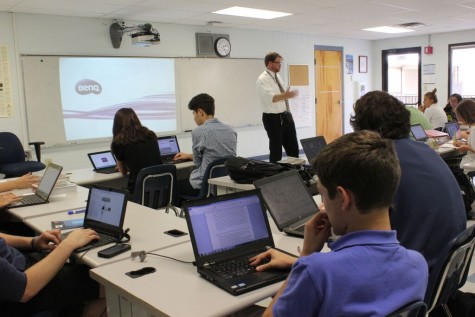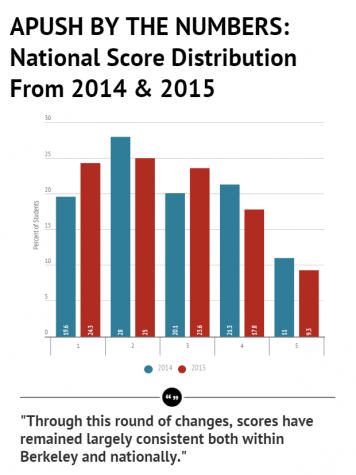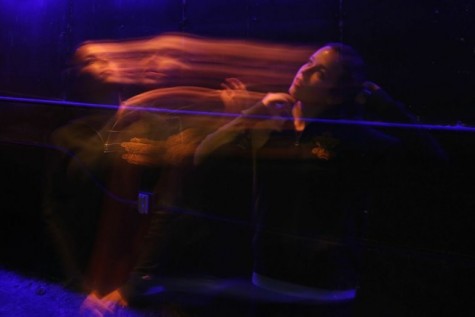Changes to APUSH Curriculum Spark Controversy…Kind Of
The old adage goes, “history repeats itself.” But, in the case of the APUSH curriculum and exam, that’s not exactly true.
Advanced Placement United States History–fondly called APUSH–is among the most popular AP classes, garnering almost half a million students every year. Like all AP classes, APUSH is administered by the College Board, a not-for-profit with the mission of putting students on the path to a successful college career.
Recently, this class has seen drastic change to both the curriculum–the framework provided by College Board on which teachers base their lesson plans–and the exam administered at the end of the year. Though the process of redesigning the class began as early as 2007, the changes have largely come in two waves over the last two years.
The first round of changes–often called the “Redesign”–was implemented in the fall of 2014 and applied to the exam administered in May 2015. This set of revisions saw a complete overhaul of the test, including changes to the types and number of questions asked. The new version of the exam places heavy emphasis on the understanding of primary source documents and the key concepts which they encapsulate, as well as the development of students’ historical thinking and investigation skills. The College Board said of the exam,
Every multiple-choice exam question now requires students to demonstrate their understanding of America’s founding documents and the great conversations they have inspired throughout American history.
For example, a question from the 2014 exam might ask which, from five options, was an achievement of George Washington’s administration. The 2015 exam, however, would present a passage from George Washington’s Farewell Address, and then ask several questions about its contents and implications.
Jeremiah Gregg, Chair of the History and Religious Studies Department and Berkeley’s resident APUSH teacher, noted that the old version of the test was “very much a comprehensive list of dates, people [and] events” and thus easier for students to prepare for. “The attempt by the College Board to focus on historical thinking skills as opposed to a comprehensive list of dates should be good in the long run.” said Gregg of the redesign. Gregg also added that these skills of historical investigation and understanding, in comparison to the rote memorization of the old test, will be more beneficial to students in environments outside of the US history class. For example, the emphasis on skills in the redesigned test makes the class more closely mirror a college freshman history class, thus preparing students for that level of critical thinking.

Students taking notes as APUSH teacher Jeremiah Gregg lectures.
Senior Jarod Guzik, who took the redesigned 2015 APUSH exam, said that he preferred the type of question presented in it–though they were more difficult for him–as they “make you think a lot more.” The newer type of questions “forced me to understand [the information] to get them right, so it’s doing its job,” Guzik added.
Gregg noted that, through this round of changes, scores have remained largely consistent both within Berkeley and nationally. On a national scale, 20.1% of students received a 3 on the exam in 2014, compared to 23.6% in 2015.
The second round of changes–for clarity’s sake, let’s call it the Revision–went into effect in the fall of 2015, at the beginning of this school year, and will apply to the exam administered in May 2016. These changes are, in many ways, a continuation of the redesign: in administering the revision, the College Board took into account the voices of many of its critics.
Here’s where things start to get tricky, though. If you’ve followed this story in the news, you may know that many conservative lawmakers and educators have argued that the curriculum put forth by the redesign only emphasized the most negative aspects of American history. The media has often portrayed the revision as merely a result of the College Board caving to conservative pressures. However, it’s not that simple.
Rather, the revision tweaks the redesign, responding to the concerns from, yes, some of these conservative critics, but also those from teachers across the country who taught the redesign during the 2014-2015 school year. “There were a lot of concerns expressed by the teachers who were doing the grading [of the 2015 exams] and those concerns were taken into account, and that’s what this revision is,” said Gregg.
The revision takes into account the concerns that the class emphasized only the negative by “softening the corners” of the curriculum–highlighting places throughout the class when American victories could be more thoroughly discussed, and ensuring that even the most negative aspects of American history are presented in way that is not so jarring that it impedes any students’ ability to fully comprehend the material. Still, the College Board has expressed that it never intended to only cast American history in a negative light. “What the College Board did well was that they re-examined how someone outside of their organization might view what they had done,” added Gregg.
Think about it–if you’re an adult who took APUSH a decade (or two, or three) ago, wouldn’t you be perturbed to learn that that the entire framework for the class had been overhauled, and that an entire generation of young Americans would learn US history in a manner completely different from that in which you did? It’s those perturbed adults who the College Board hopes to calm with the newest changes.
But the revision also included changes that aren’t as “controversial” or headline making, such as alterations to clarify the rubric for the Document Based Question (DBQ); in fact, it was this change that Gregg pointed to as most beneficial for instructors and graders, as it would allow those reading DBQs to more accurately pinpoint the scores students’ essays deserved.
The changes made to the APUSH curriculum and exam over the last two years were also implemented in AP European History this year, and are set to be introduced to AP World History next year.
“Think about how seldomly US history curriculum is talked about in the national media. So the only time it’s talked about is when it becomes ‘controversial,’“ Gregg said, employing air quotes on the last word. “Somebody decided it wasn’t their version of history, but that’s the great thing about history—it’s something that we talk about, something that we investigate.”
When asked if he enjoyed his APUSH class, Guzik answered immediately: “Yes. It was tough…but rather fun.”

Upper Division students taking APUSH this year are looking forward to taking a more advanced, but still very fun, look at American history.
If you’re an APUSH student of the past, present or future, and have thoughts on the curriculum changes, feel free to sound off in the comments below, or let us know how you feel on Twitter by tagging @bpsfanfare.

Maya, a senior, previously worked as a staff writer and a Features editor on The Fanfare, and is excited to be serving her second year as co-Editor-in-Chief....

Alex Livingstone is currently flawlessly executing her job as photo editor for Fanfare during her senior year at Berkeley Preparatory School. While not...






